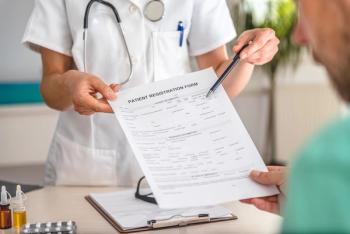
Retention a stumbling block in punctal plug delivery trial
San Diego-"There's a well-defined and ill-met need to improve the delivery of glaucoma medications." That's the word from Richard A. Lewis, MD, a private practitioner in Sacramento, CA.
San Diego—“There’s a well-defined and ill-met need to improve the delivery of glaucoma medications.” That’s the word from Richard A. Lewis, MD, a private practitioner in Sacramento, CA.
Dr. Lewis described ongoing efforts to develop a punctual plug delivery system to deliver a consistent dose of latanoprost (Xalatan, Pfizer) for 3 months. In a double-masked phase II study, 61 patients with glaucoma were randomly assigned to receive 3.5, 14, or 21 mg of latanoprost via a commercially available punctual plug and followed for 12 weeks.
At 12 weeks, a statistically significant mean IOP reduction of 20% from baseline was observed for all three groups. There was no dose-response relationship, and Dr. Lewis speculated that the dosages may have been too conservative.
“Over 90 days, the typical dosage would be 90 drops,” he said. “Our 3.5-mg group received the equivalent of only three drops; our 14-mg group received nine drops, and our 21-mg group received 14 drops.”
The treatment was well-tolerated, and 89% of the patients who retained the plug reported “no awareness” of it at 12 weeks. Only 75% of the patients retained the plug, however, even though eligibility criteria included a pre-screening for plug retention.
The most common adverse event, in about 15% of the patients, was increased lacrimation. There was no change from baseline in safety or biomicrsoscopy variables over the 12 weeks of the study.
“This was the first randomized, double-masked, multicenter, multi-dose study to investigate a punctal plug delivery system for glaucoma,” Dr. Lewis said. “Although the devices were well-tolerated over 12 weeks, retention rates of the commercially available silicone plugs were not optimal.”
Dr. Lewis concluded that he and his colleagues will continue to study refining the dose and the plug to maximize efficacy and retention.
Newsletter
Don’t miss out—get Ophthalmology Times updates on the latest clinical advancements and expert interviews, straight to your inbox.









































